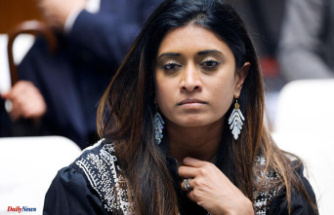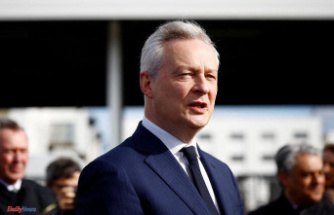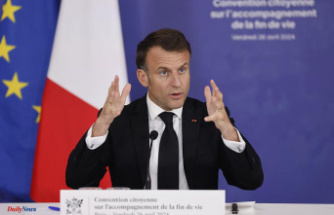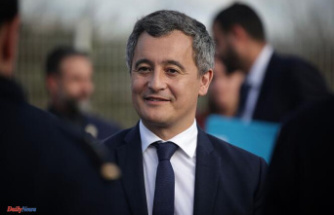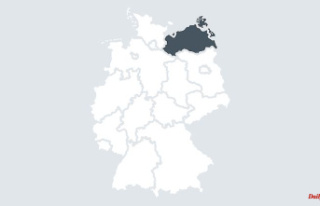With her illustrations, the Ukrainian artist Anna Sarvira fights against the Russian war of aggression and Putin's propaganda - in Germany and worldwide. In 2014 she co-founded the "Pictoric Illustrators Club" in Ukraine. The aim of the collective is to raise awareness of Ukrainian art through exhibitions around the world. In an interview with ntv.de, the 36-year-old from Kiev, who has been living in Cologne since February, says that depictions of the dead Russian president are not popular everywhere in Europe.
ntv.de: How did you experience the Russian invasion on February 24?
Anna Sarvira: I was lucky. I arrived in Cologne on the Sunday before the invasion started because my friend is German and lives there. On February 28, I wanted to return home because it was my mother's birthday. But nothing came of it. My parents stayed in Ukraine. But I hope that they can come to me for Christmas (Orthodox in Ukraine celebrate Christmas on January 7th – editor's note).
Have you ever been to Ukraine since the beginning of the war?
No, and to be honest, I don't want to either. However, I am already planning a trip in April. I still have the image of Ukraine before the war in my head. I didn't see Kyiv at war and I'm not ready to see it yet. But I miss it very much.
In 2014 you founded the "Pictoric Illustrators Club" with your colleagues. What kind of club is this?
Pictoric is a community of illustrators. Together we organize exhibitions and cultural events in Europe, but also in the USA, Japan and so on. Our focus is on Ukrainian illustration, but we also work with foreign colleagues. Since 2014 we have been holding international exhibitions in Kyiv and building relationships between Ukrainian and foreign artists. We invited them to Kyiv and they invited us to their place. When the war started, we received a lot of support from our foreign colleagues.
With your exhibitions you collect money for Ukraine. How exactly does this work?
After the war started, we understood that we can contribute to the support of our country with our art. At the exhibitions we sell flyers and posters; If there is no opportunity to sell, we simply place a QR code that can be used to donate to well-known funds supporting the Ukrainian army. We don't put anything in our own pockets.
How much money have you raised this way?
We don't know exactly. In Sweden, for example, we raised 5,000 euros through the sale. The entire sum was transferred to "Vostok SOS", an organization that helps evacuate people from eastern Ukraine. It's different every time, sometimes it's 500 euros, sometimes 5000 euros. The grand total is very difficult to calculate.
Which target group are your illustrations aimed at - Ukrainians or foreigners?
Most are aimed more at foreigners. They are illustrations that could explain, for example, what happened in Bucha. Or why surrender is not an option for Ukraine. But we also organize exhibitions in Ukraine. Before we host an exhibition, we let the audience vote on which images we should show. And most often the posters chosen by Ukrainians and foreigners are different. Ukrainians want to see more motivating images – and foreigners want explanatory ones.
A lot of terrible things are happening in Ukraine right now. Do you have any drawing limitations, anything you absolutely do not want to draw?
Each of us draws what we can understand. Of course, depicting war crimes is very difficult. You also have to be very sensitive because a drawing is not a photograph and you have to draw metaphorically.
How are the pictures perceived in Europe?
All countries exhibit our works in different ways. In Poland, for example, all motifs are exhibited, even a dead Putin. The Germans, on the other hand, would rather not show something like that. A picture with Molotov cocktails was also rejected because they are associated with left-wing movements in Germany. So there are some peculiarities. But we take it easy. Of course it's nice to have more freedom and not to be told what you can and can't do, because it's about the war. Basically, the larger the institution that helps organize the exhibition, the less likely it is that we'll be allowed to show something scary like dead people. It's a little sad, but okay.
Don't you think that Europeans are tired of the images of war?
I have noticed that there is less and less talk about Ukraine in the media. The Germans are tired of our war. Of course that's sad. I understand that they have their own problems. But I'm very happy that we're planning exhibitions in Germany for next year as well, which means they won't forget us. I experienced a lot of support here in Cologne. I am very grateful for that.
How do you recover? Don't you get tired of painting war?
Actually, I don't paint that often now because exhibitions take up a lot of time. But if I paint the head of a dead Putin or Lavrov, for example, I feel better. It's like psychotherapy.
But, as you said, the dead Putin is not accepted everywhere.
Yes, but I also have many other pictures. We will later exhibit the dead Putin in Moscow.
Mit Anna Sarvira sprach Maryna Bratchyk


